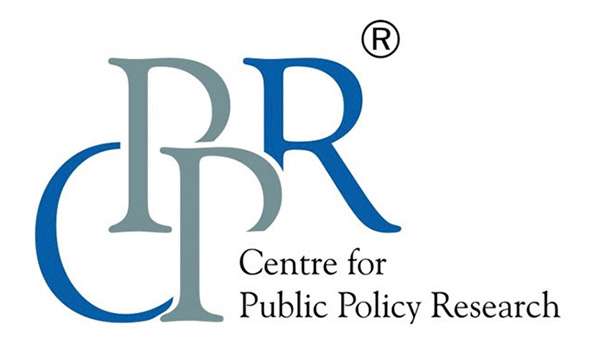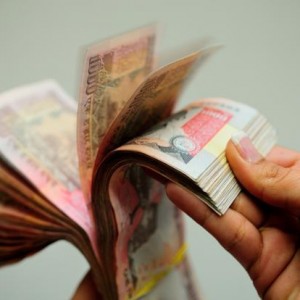
Why Government Awards??
November 11, 2015
Ambitious Government, Aiming for Realising Idle Gold
November 23, 2015Foreign Debt of India Inc and Currency Risk
- Adani Power
- Bharat Petroleum Corporation
- China
- debt
- dollar
- external commercial borrowing (ECB)
- FDI
- foreign currency convertible bonds (FCCB)
- foreignm corporate debt
- hedge
- Hindustan Petroleum Corporation
- India
- Indian Economy
- Indian Oil Corporation
- IT
- Japan
- Korea
- metal exporters
- oil producing/refining companies
- Pharma
- RBI
- Reliance Power
- Tata Power
- unhedged
The latest RBI data shows that external commercial borrowings from March 2014 to March 2015 increased by 32 per cent to $ 181.9 billion. It has jumped by 21 per cent over 2013-14. This is 38 per cent of India’s total outstanding external debt. Commercial foreign borrowings have grown at an annual rate 15.6 per cent since 2008. Indian companies’ foreign currency debt exceeded Rs 4.5 lakh crore in 2014-15. Indian companies increased their dollar borrowings in the last 18 months when the currency remained stable. The proportion of hedging has also reduced. As per RBI, the hedging ratio was 41 per cent. It means that more than half the forex exposure remains open. Naturally it increases currency risk.
Foreign Currency Exposure
The debt market in India[1] has provided a space for Indian corporate. Earlier Indian corporate depended on internal bond market. But faced with high cost of borrowing coupled with liquidity crunch, Indian companies decided to go abroad for cheaper loans. Indian corporate found that borrowing abroad, especially in US dollars, was a cheap route compared to internal borrowing because RBI has been keeping its rates extremely high for years. While the borrowing costs for a decently rated investment –grade firm could be about 12 per cent in India, the same could be a few percentage points[2] less abroad. Adding to this, the government raised the cap for overseas borrowing. All these led the Indian companies to load up on foreign currency denominated debt in the form of external commercial borrowing (ECB) and foreign currency convertible bonds (FCCB) to fund their activities. Local companies made a run the last year toward acquiring more cheap foreign debt after Modi’s victory at the centre. According to a recent report , India Inc raised about USD 19 billion through foreign borrowings this year, a record high, and may borrow even more next year.
Strengthening of Dollar – major cause for Currency Risk
India Inc’s dollar exposure continues to grow at a fast clip. The problem is that unhedged[3] exposure is high. It has been pointed out that half of the short term debt and 75 per cent of long term debt was unhedged. Two-thirds of Indian Chief Financial Officers (CFO) opined in a survey that they had a significant exposure to the dollar and 53 per cent of it is hedged against currency volatility. Rupee depreciation will adversely increase the cost of unhedged portion of the debt. Utility and infrastructure companies earning in rupees but having borrowing in dollars will be more sensitive to rupee’s depreciation. The reason is that they have amortised repayments every year, along with interest payment costs. An IMF report of April 2015 states that 37 percent corporate debt in the country is at risk. Tests and reports across the world show that Indian companies are most vulnerable in stress scenarios and this poses a major concern for Indian companies. A third of the corporate debt in India has a debt-to-equity ratio[4] of more than three, the highest degree of leverage in the Asia-Pacific region, IMF said.
“In some countries, even though aggregate measures are not excessive, a large share of corporate debt is concentrated in only a few, highly leveraged ?rms. The distribution of leverage does matter and Asia clearly has ‘pockets’ of highly leveraged ?rms—including in China, Japan, India, and Korea—that may pose a risk to macroeconomic stability,” IMF said in its Asia Pacific Economic Outlook.
The Indian Oil Corporation, Hindustan Petroleum Corporation and Bharat Petroleum Corporation had over 50 per cent of their total debt in foreign currencies as on 31 March 2013. The power sector firms, such as Tata Power, Adani Power and Reliance Power, have borrowed heavily from abroad. Many of these are also conservative in their hedging of foreign currency exposure.
It is made clear that the trouble arises when companies leave major part of the foreign currency exposure, particularly to the dollar is unhedged. The rupee was trading close to 60 to the dollar for a major part of this year. It appears that this exchange rate level would last. In the hope the currency would remain stable, the Indian companies leave a major part of their foreign currency-denominated debt unhedged as part of their strategy to cut down the borrowing costs. Contrary to their expectations, the dollar strengthened recently. It must be noted that in 2013 the borrowing costs of Indian corporate went up due to fall in the value of Indian rupee. At that time half of India’s USD 200 billion corporate debt was unhedged and half of it being short term. This led the companies to show huge mark-to-market losses while declaring earnings. Now, the rupee depreciation has made foreign debt costlier by 10-15 per cent, which is a big problem considering that the repayment capability continues to be at a low for the Indian companies
There is every possibility that dollar is expected to gain further in 2015 and naturally this would aggravate the vulnerabilities of Indian companies which are exposed to foreign debt. It has been aptly pointed out in the financial stability report of RBI that “possible adverse exchange rate movement arising out of financial market volatility might affect companies with unhedged foreign exchange exposures and have implications for financial stability”. The risks are high when you recognize the fact that muted global growth is expected, there is the possibility of lower trend of capital flows due to the hike interest rate, and there is high risks to be emanated from uncertainties in crude oil prices and lower exports.
No doubt, the companies that enjoy ‘natural hedges’ are protected in a big way. These are the companies who will be benefited out of appreciation of dollar. IT, Pharma, metal exporters, and oil producing/refining companies that price their products in US dollars are often benefited out of rise in the value of dollar. Still, the rupee’s slide is not helping tech firms in its right spirits. The major reason is that there is higher dollar spends by these firms in onshore locations, which will lead to lower net dollar earnings. However, as against the natural hedge firms we have indebted telecom firms, automobiles, auto components, airlines, energy, oil marketing companies and the like. It is really a double whammy for them because they import raw materials from abroad and enjoy no natural hedges in terms of foreign revenue or assets. Alas, the rupee depreciation will result for them in higher input costs on the one hand and higher spend on interest payments for foreign loan on the other. The companies in the metals and power sectors also incur high dollar-denominated input costs, which, along with their existing foreign loan exposure, could put pressure on their profitability.
Repayment and other Issues
Corporates are in a trouble to repay. The first aspect is that a large share of foreign debt is being accounted for by weaker firms, according to IMF. It has been pointed out that in India and China, about half of the corporate debt is owed by ?rms with return on assets below 5 per cent, and some of it is owed by ?rms that are posting losses. Another problem is that a significant share of debt is linked to companies in countries such as India and Indonesia, where more than 20 per cent of the debt is owed by ?rms with profit-to-interest expenses ratio of less than one, implying low ability to pay back short-term liabilities. The lower the ratio, the more the company is burdened by debt. It has to be understood along with this that according to the 2014 Global Financial Stability Report stress tests, only India and Indonesia among major Asian nations will face significant risks with the median interest coverage ratio for the entire corporate sector falling below 1. The weakest economic growth in a decade, slowing demand, and above all hike in interest rate (and consequently the borrowing costs goes up) internationally etc will further put further strain on corporate to repay the loan amount.
To conclude, the foreign debt problem of Indian corporate consequent to the currency risk is apart from the domestic debt they have. In fact, the concentration of debt due to the small base of large enterprises does pose its challenges and is a worrying phenomenon. Domestically, over-leveraged companies in India have put significant stress on banks as the latter is criticized for the increasing share of bad loans. High corporate debt poses a systemic risk because it is widespread among sectors like infrastructure, power, road, textiles and gems and jewellery. It could impact our exports as well as employment. The increasing exposure to dollar- denominated foreign debt in the midst of dollar appreciation has to be addressed properly, at least by way of hedging it.
* The Author is Chief Economist at CPPR. Views are personal.
[1] The debt market in India comprises broadly two segments, viz.,Government securities market and corporate debt market. Corporate debt issued by a firm is either in the form of commercial paper (CP) or corporate debentures/bonds (CB). While CP has maturities between one week and a year, corporate bonds have longer maturities. Both public and private companies issue corporate bonds.
[2] 2 percent treasury yields + 2 percent risk spread + 5-6 percent hedging costs
[3] Hedging is meant to minimize losses, or investment risk, not to maximize profits. This achieved because one kind of shares or assets may fall in prices, others may rise in prices
[4] A high debt-to-equity ratio indicates that a company has been borrowing to fund expansion instead of raising money from the market.
Dr Martin Patrick is Chief Economist at CPPR. He holds a PhD in Applied Economics from the Cochin University of Science and Technology (CUSAT), Kochi and also had a post-doctoral training at Tilburg University, Netherlands. Presently, he is a Visiting Fellow at Indian Maritime Institute, and Xavier Institute of Management and Entrepreneurship, Ernakulam.
- Dr. Martin Patrickhttps://www.cppr.in/author/dr-martin-patrick
- Dr. Martin Patrickhttps://www.cppr.in/author/dr-martin-patrick
- Dr. Martin Patrickhttps://www.cppr.in/author/dr-martin-patrick
- Dr. Martin Patrickhttps://www.cppr.in/author/dr-martin-patrick



